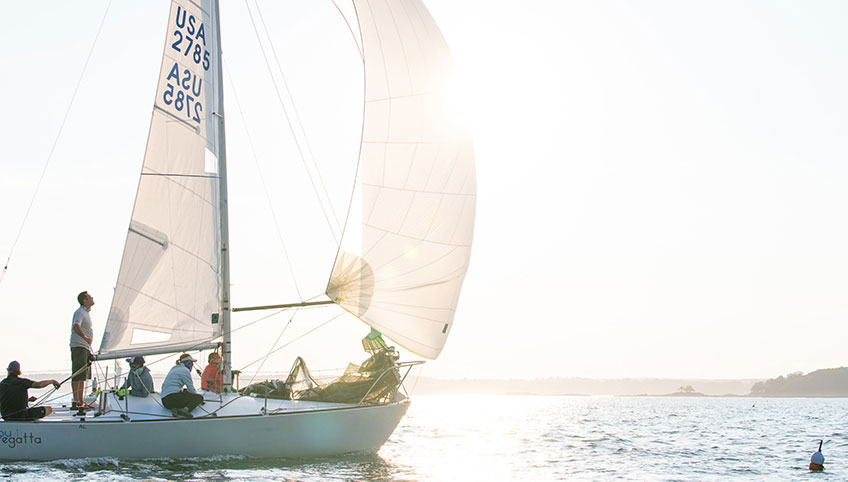Dialing in the boat and crew in varying conditions is never easy, but some teams make it look easy! Quantum Rochester's Travis Odenbach reflects on the 2021 J/24 North American Championship and the lessons he and his team learned during the regatta. Read on for Travis' analysis of the event, and settings and trim recommendations.

Sayville Yacht Club hosted the 2021 J/24 North American Championship June 18-20. The venue did not disappoint, delivering ideal conditions of 8 knots to 13 knots out of the southwest, not to mention a fantastic race committee and outstanding competitors. SYC is located on the Great South Bay in Long Island, New York. When I think of Long Island, I think light air and unfavorable conditions, but I am here to say that that stereotype is false. Since SYC is on the south side of Long Island, the sea breeze kicks in everyday and delivers great conditions. The volunteer membership at SYC helped with the event, and, from a competitor perspective, it was well organized. I would gladly attend many more championships held there.
The sailing proved to be pretty tricky the whole weekend. Originally, we figured that the sea breeze conditions would make for a pure boat-speed venue, but some variables and oscillations in the breeze proved that tactical decision-making was equally critical. Port tack was the more challenging board because it put us straight into a short, stacked chop. Our tactician, Geoff Becker, and I agreed to focus on maintaining height and keeping the boat fast in these conditions. This translated to a setup using a powerful and slightly eased genoa with a fairly twisty mainsail. On starboard tack, we could get away with trimming a bit harder, pushing the boat up, and getting height when possible.
Although it may go against intuition, it’s okay to use different trim numbers on each tack, especially if the boat is behaving differently in the chop from side-to-side. Through practice and communication, you’ll learn how your boat sails in different sea states on opposite tacks while taking pressure, point, and speed into consideration. I chose to use slightly different genoa and mainsail trim on either tack, and I kept good notes. Use the Quantum Sails J/24 tuning and trim guide as a starting point, and make your own adjustments from there.
Downwind proved to be just as complex. When the breeze lightened up, port jibe felt unstable. The waves were not coming squarely from behind, so we needed to sail slightly higher and use body weight to control heel and keep the boat from rocking excessively. We were able to sail lower on starboard jibe with the best VMG when we sailed with the waves directly astern. Another note: No matter what jibe you are on, always sail in the cleanest air possible. There is quite a speed difference even when only the mainsail is covered.
The biggest lesson we learned over the weekend is preached by every great team that has come along over the years. The team! Sailing with consistent crew has proven time and time again to produce great results. I know keeping a team together can be a tough thing to do, but it is the most effective way to consistently improve your results. Mike Stasko and his team on Redline have sailed together for three years and made great improvements during their time together. At North Americans, they finished eighth overall, third in Corinthian, and first in the last race. It should be a reminder to anyone working on improving your results that teamwork is absolutely essential to J/24 sailing and patience and hard work go a long way. Stasko and his team were certainly an example of that.
Congratulations to all the competitors this year, and good luck through the rest of the season.